We are so excited to kick off the new year by featuring one of MCESC's very own A-LISTers! When we have coached teams at MCESC Learning Center- West it has been evident that SLP Laura Windholtz is a pillar of their school community! Laura goes above and beyond to meet the needs not only of her caseload students but all of the students at West through creating spaces to facilitate communication, working with parents and outside agencies to provide wrap-around resources, and providing essential training for classroom staff.
When we reached out to Laura to contribute to today's A-LIST Spotlight post, she went above and beyond as she does in all things. Keep reading to learn more about the supports she shared.


My name is Laura Windholtz and I am a Speech-Language Pathologist at MCESC. I started working at MCESC in 1995. I worked part-time for several years to raise my children and currently work full-time. I have served in many school districts over my career, but feel at home at Learning Center West.
People who know me describe me as enthusiastic, creative, and influential.
As an SLP at Learning Center West, I serve on the building leadership team, work with students that use AAC, train staff, parents and students on a variety of AAC systems, have presented many trainings and implemented a core word of the week curriculum, Enthusiasm is shown every day through my work, my presentations and commitment to helping staff and students.
The most rewarding part of my job is giving my students a voice. This is not just a job to me, it is a passion! I love when student receive a voice for the first time and staff share stories of students using their voice.
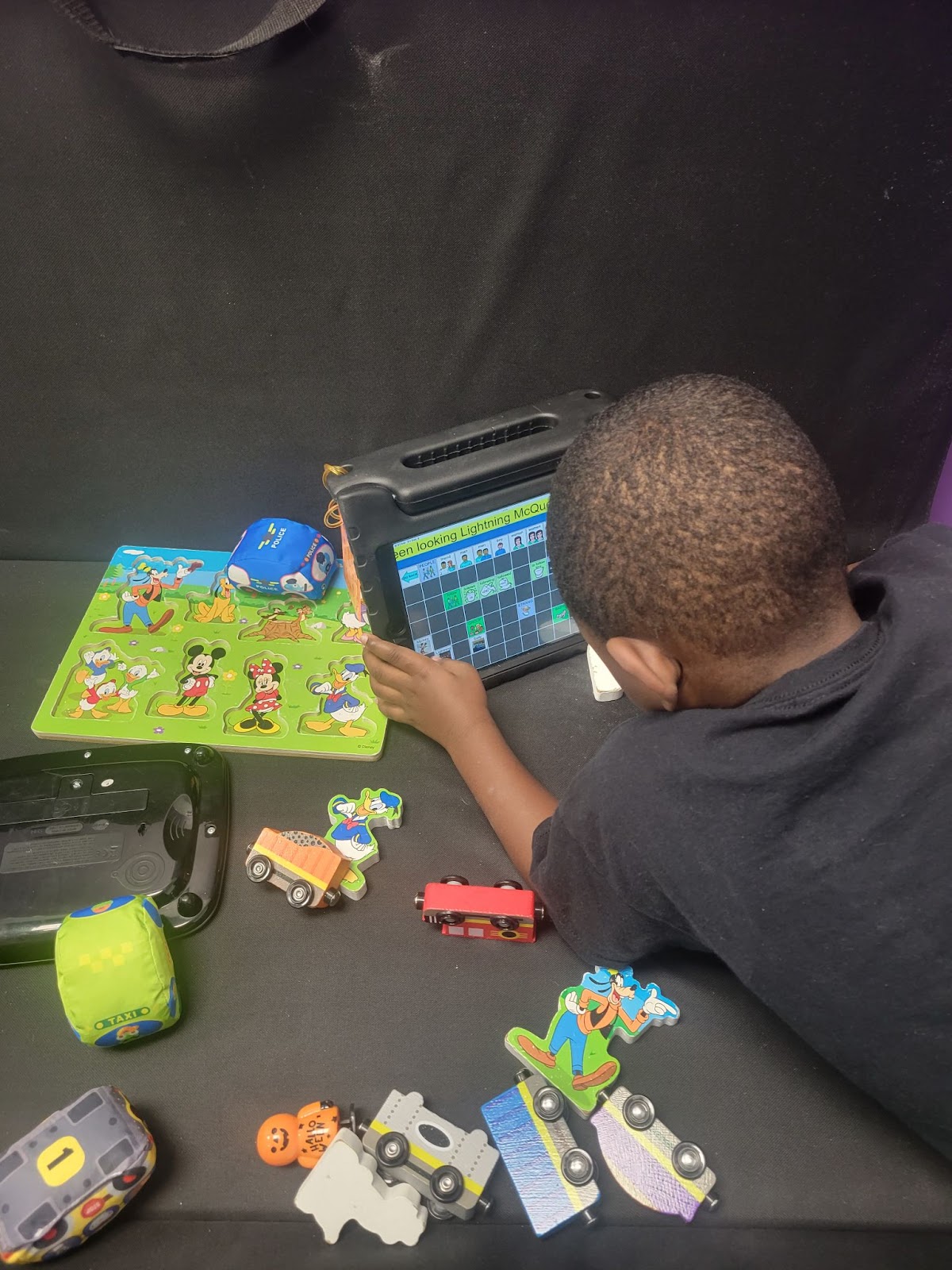

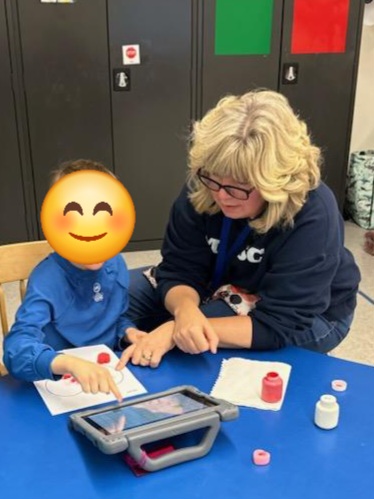
I also have a passion for coaching and supporting staff. Many times it is just being there to listen. It brings me great joy when staff members are communicating with students using AAC.
I am creative in and out of the workplace. I love to scrapbook and work on crafts in my spare time. One of the ways I express my creativity at work is in the Say and Play!
Say and Play Dramatic Play classroom:
When my principal purchased some dramatic play equipment for our indoor space, I thought it would be cool to add some props to enhance language. We had a construction site and a campsite. Over the past 3 years. I have added a vet, target store, Starbucks, doctor's office, kitchen, and nursery. The dramatic place space is now called the Say and Play. The purpose is to model and expand language, teach and model play skills and practice social skills.
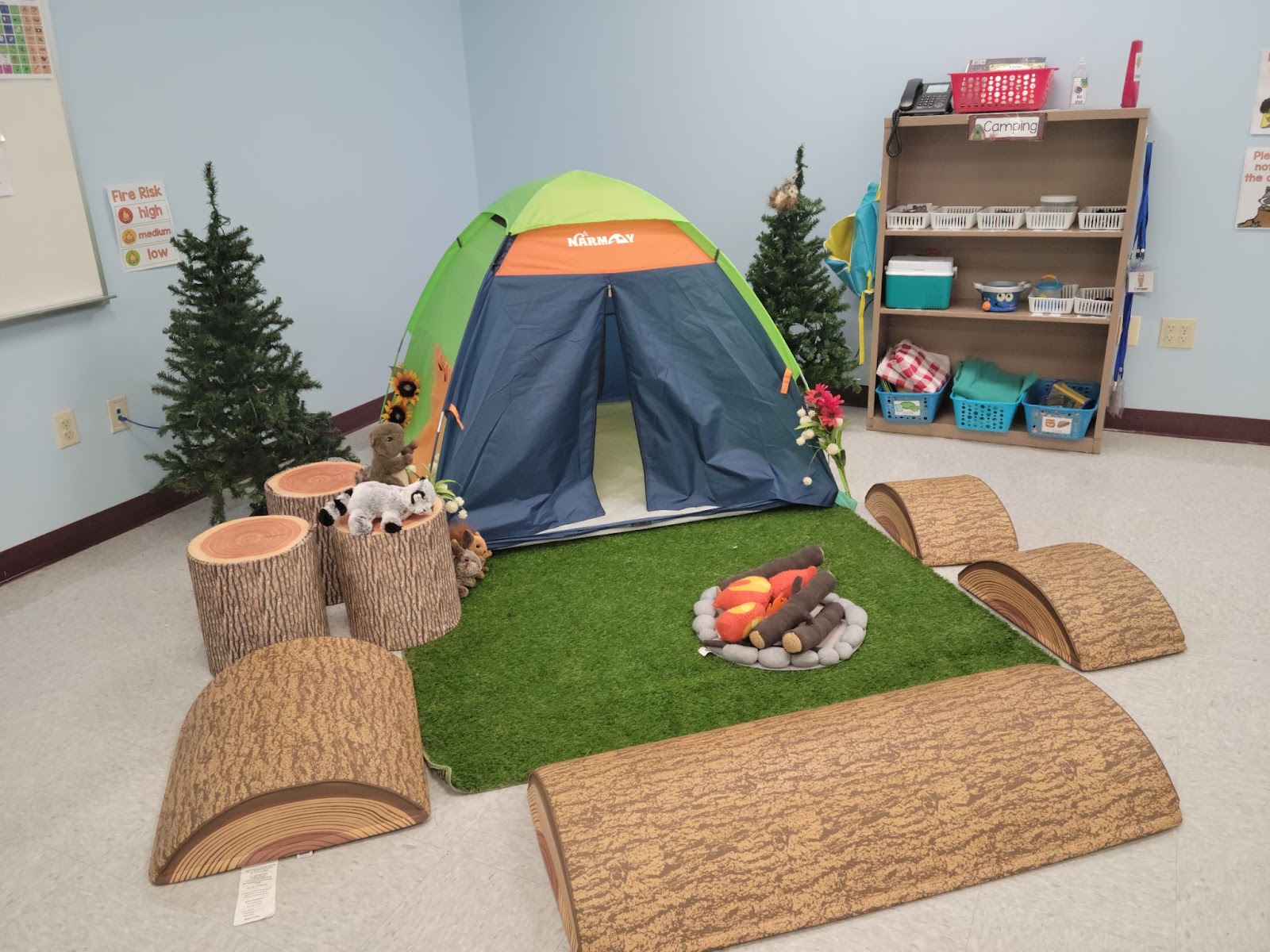
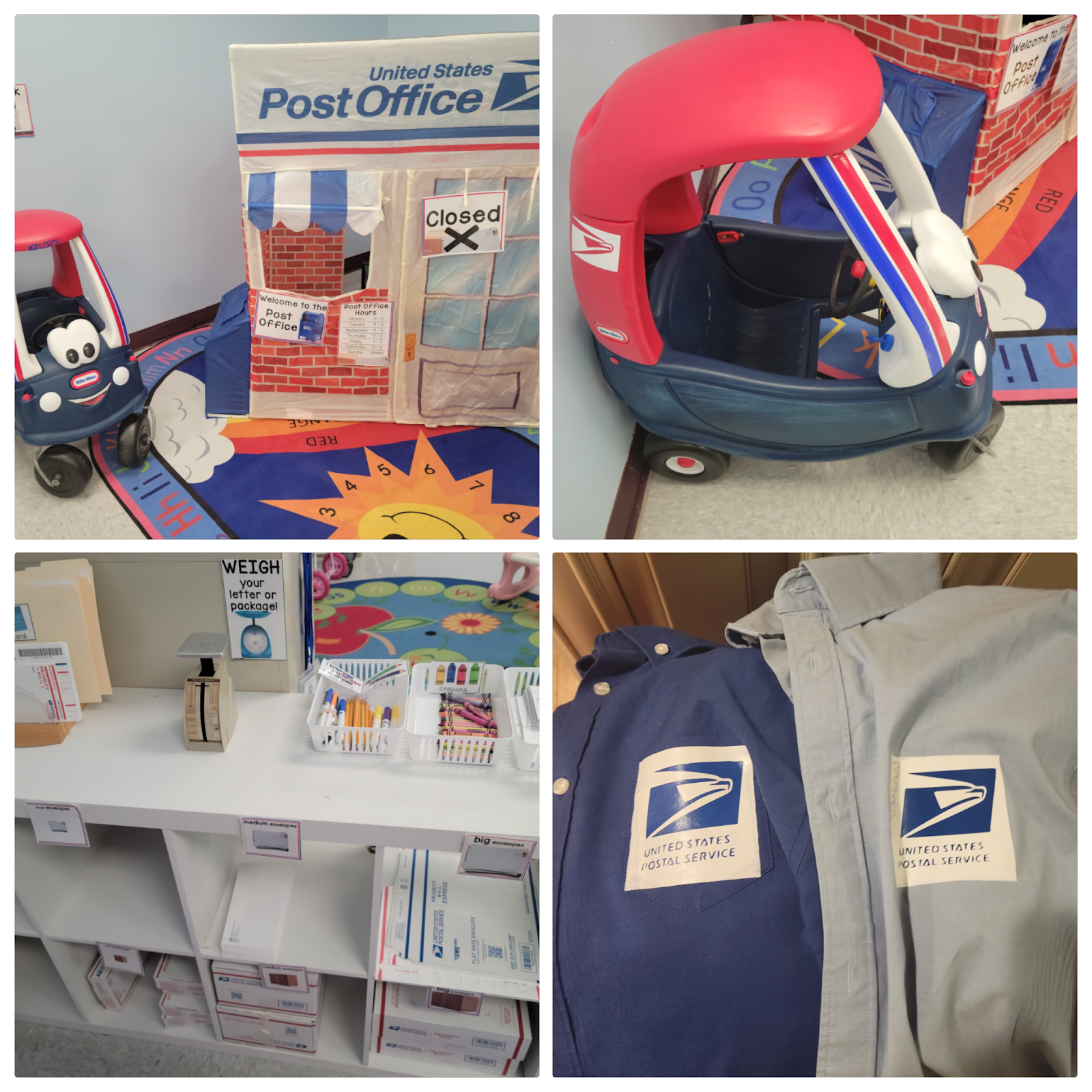
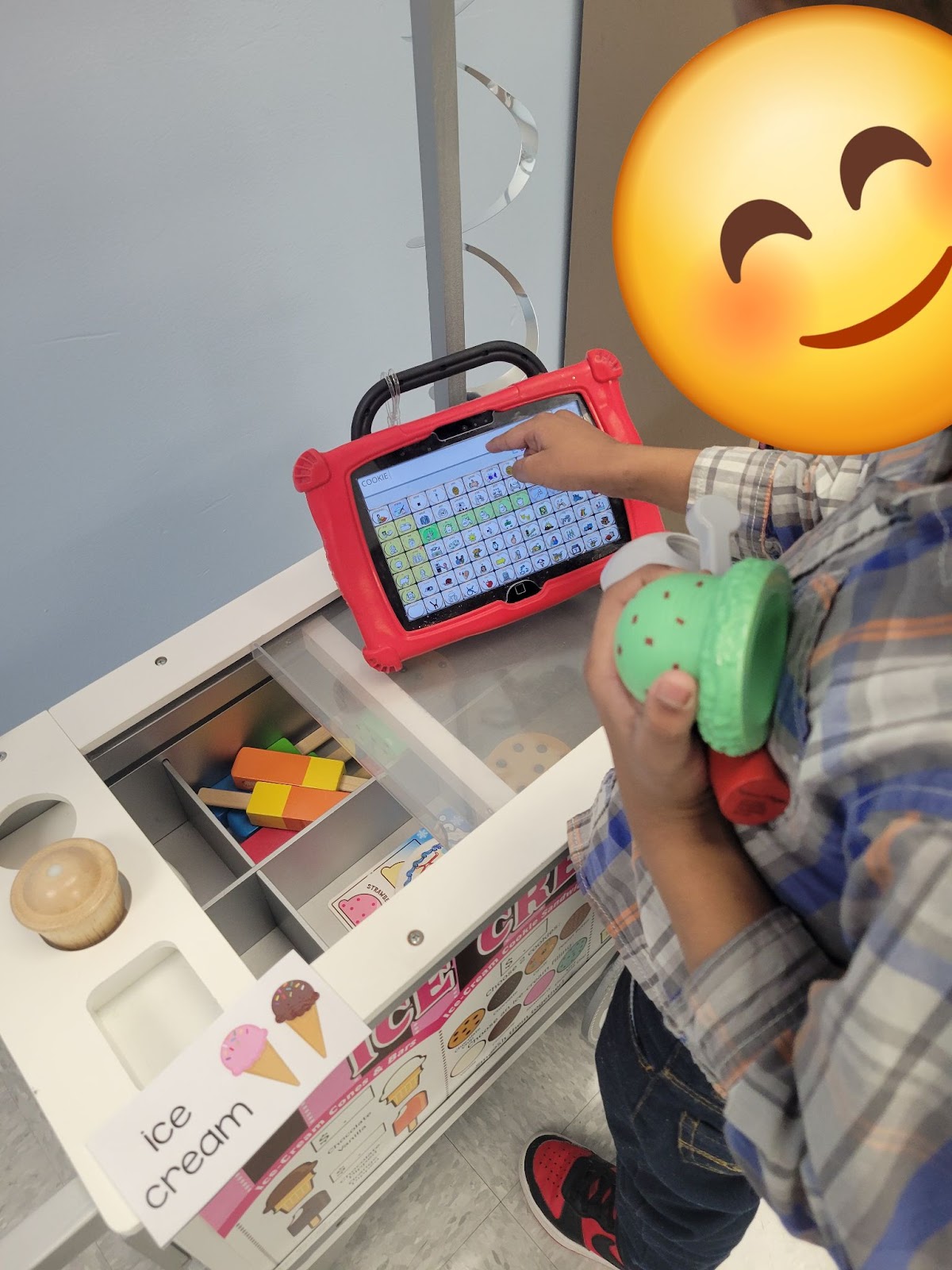
This year some of the themes are tied to the Unique Learning System curriculum. The month of October featured physical science. Our janitor helped me install a pulley system. Through play the kids learned about simple machines.
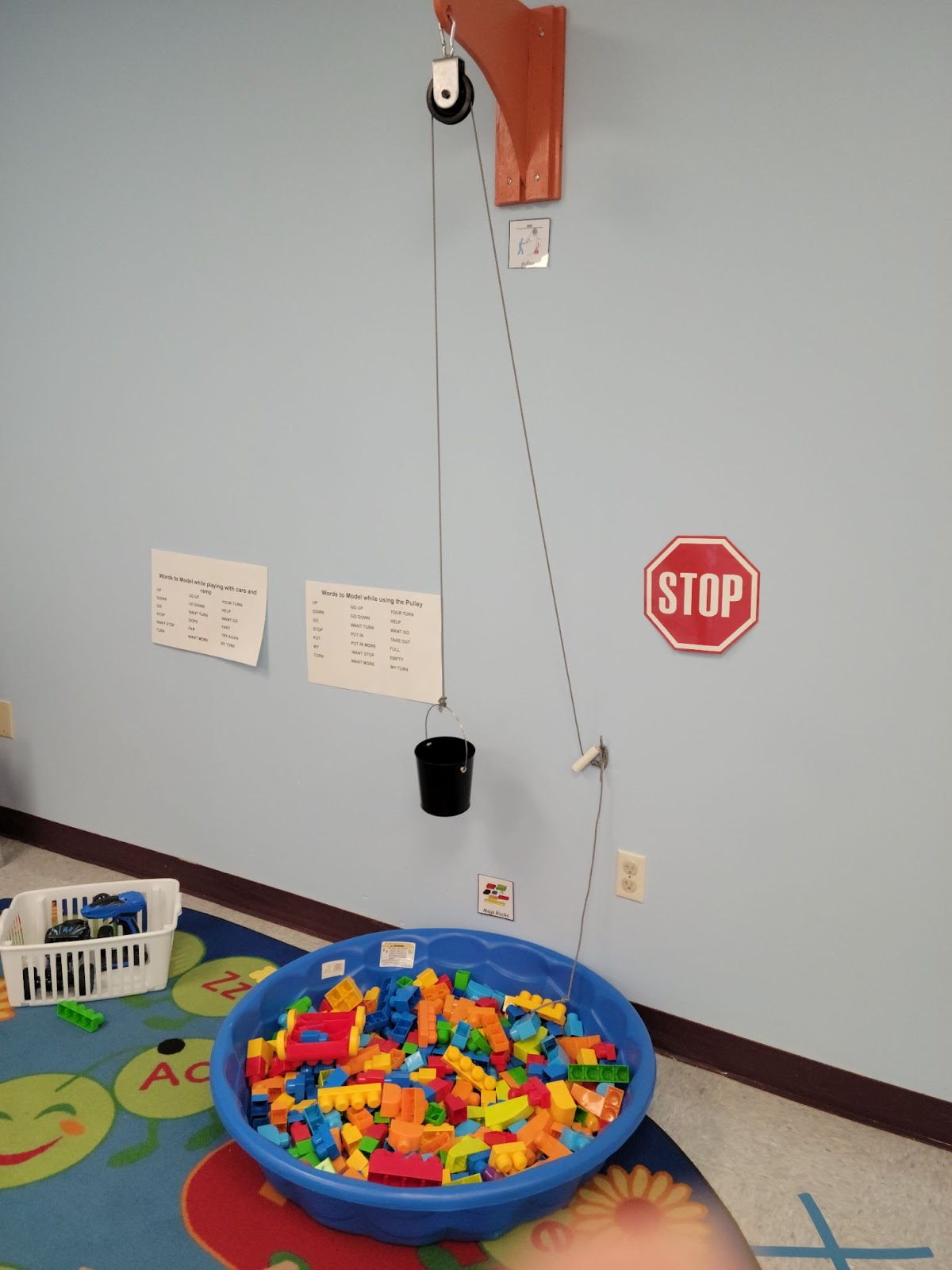
Facilitating Use of Core Words
I enjoy being creative on the job! My creativity helps keep the job fun and interesting! Creativity is also shown through the core word of the week. I have set up core word bulletin boards, developed core word lesson and games and created a google slide presentation with core words activities.

Interactive Bulletin Boards - I have also designed interactive bulletin board that emphasize language.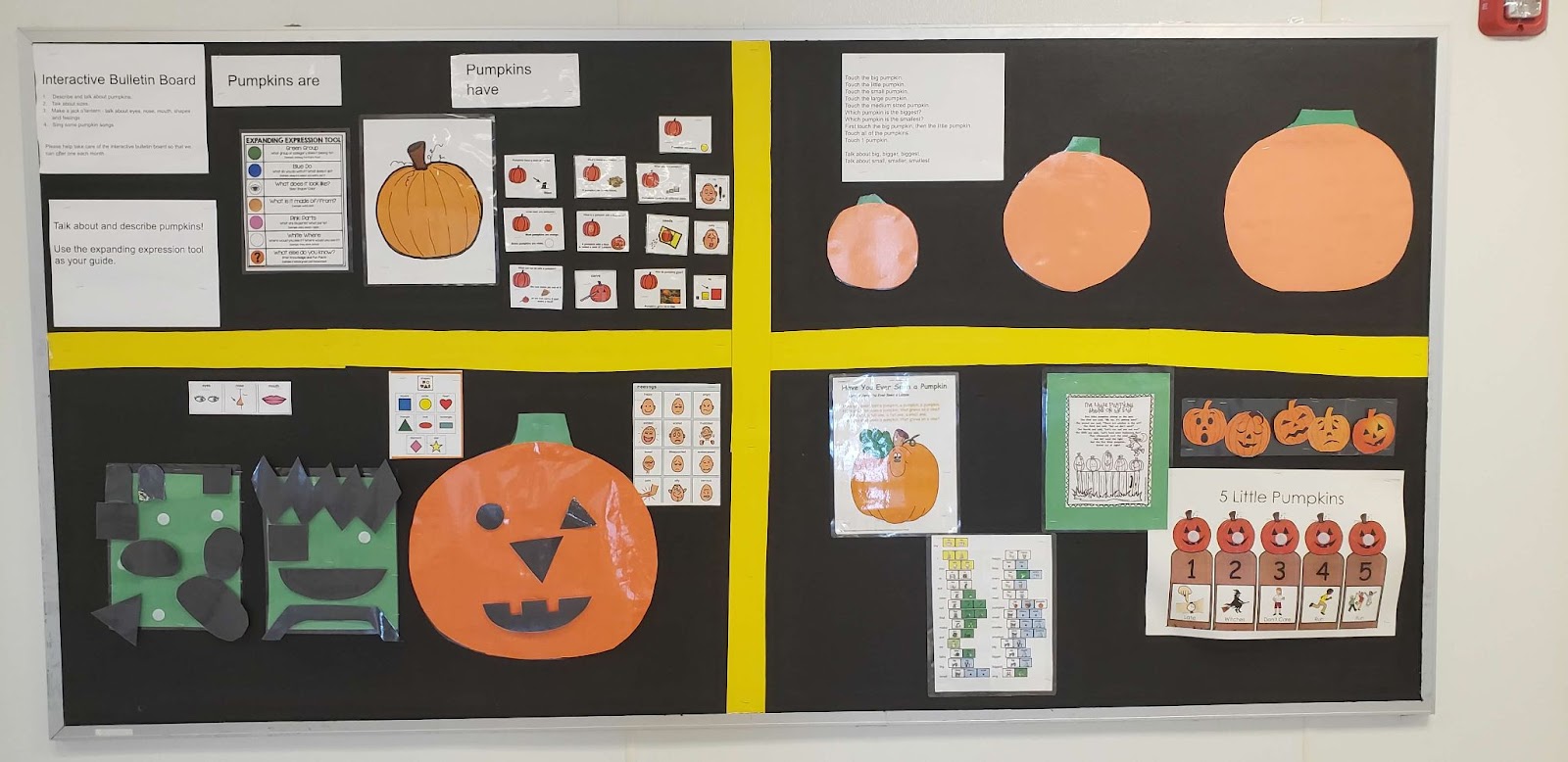

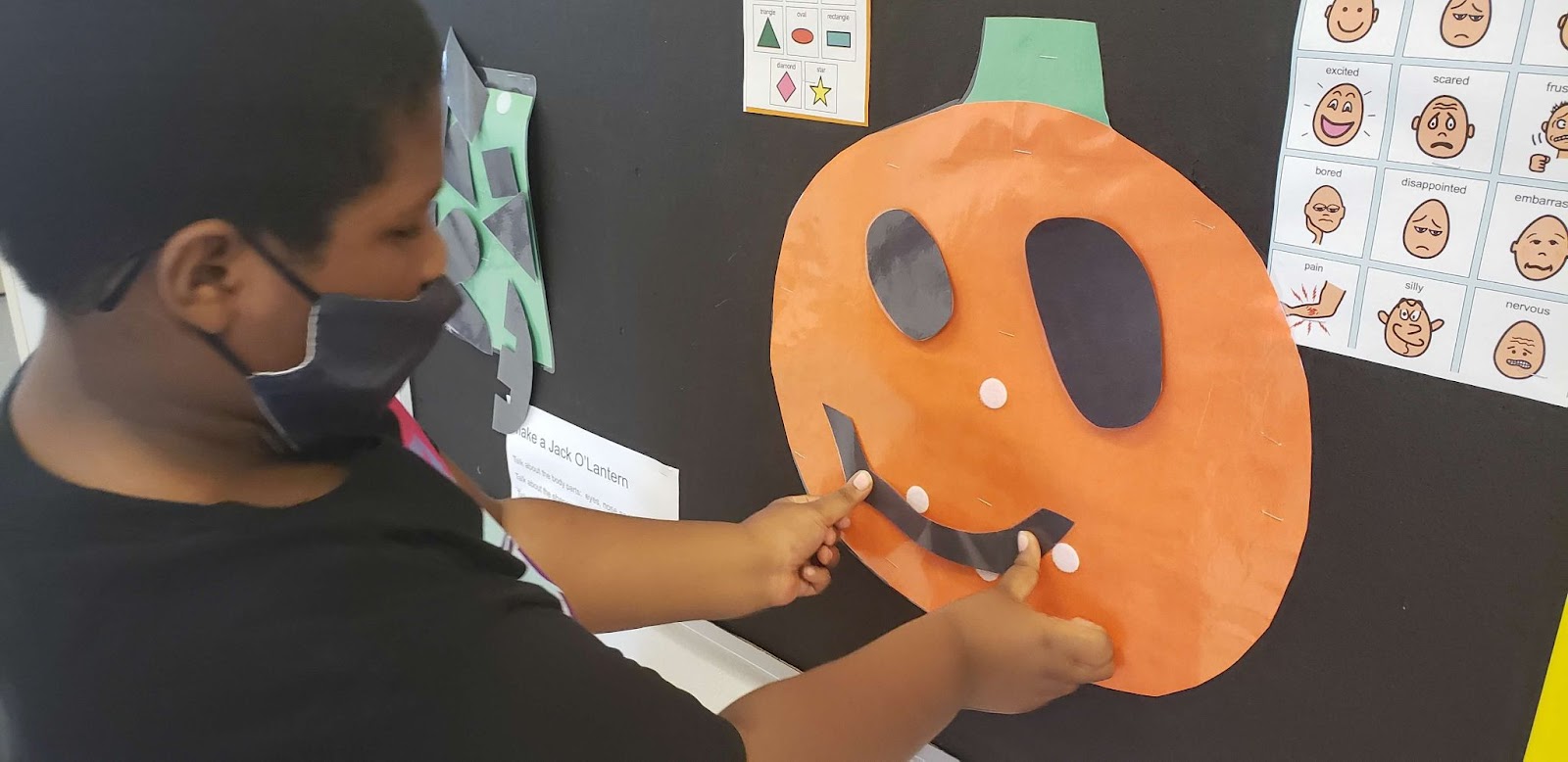
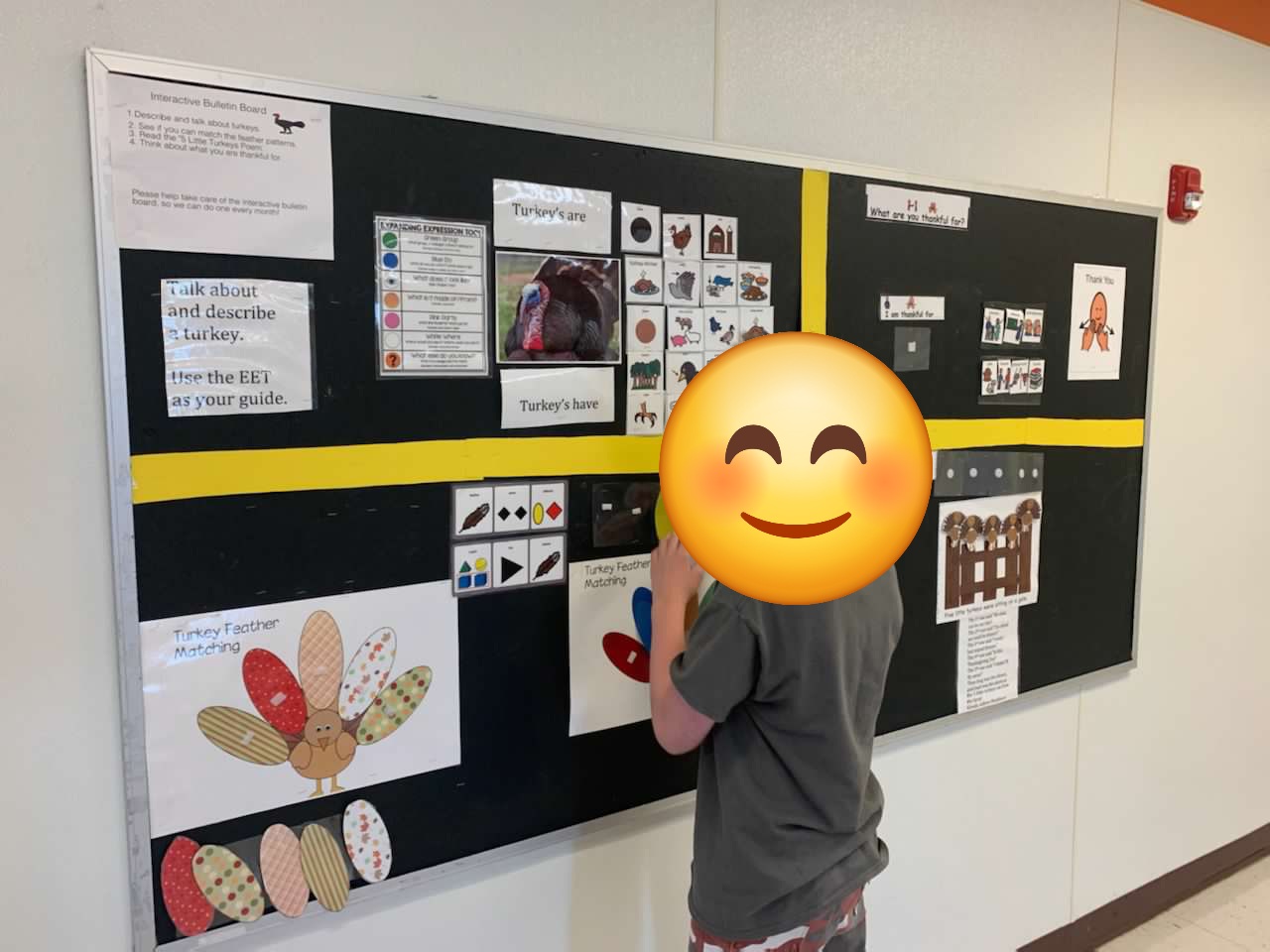
Other creative ways I incorporate communication throughout the day – I mounted a communication board to foam board and put inside an old ipad case. You can mount to a desk with mounts found on Amazon.
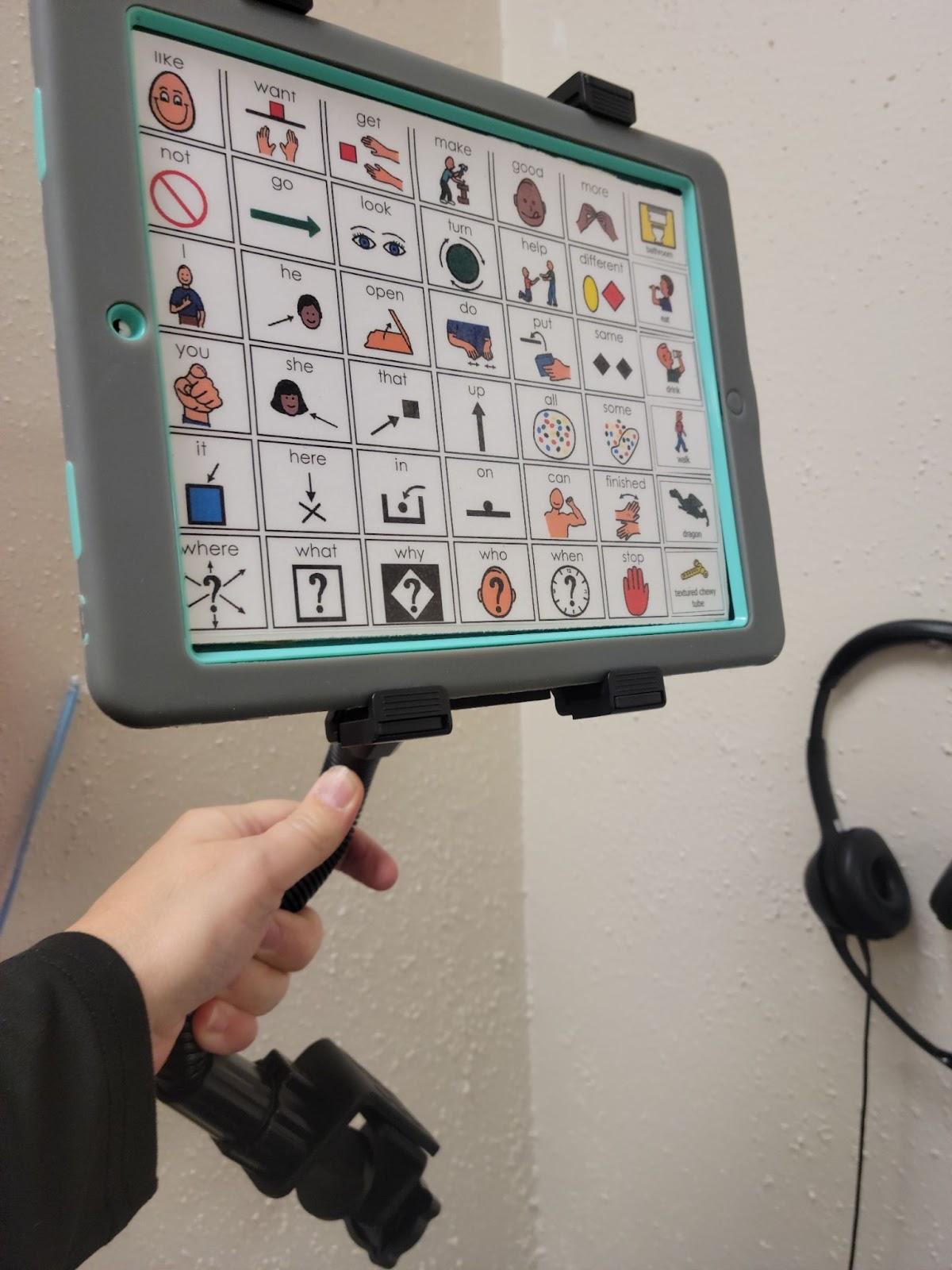
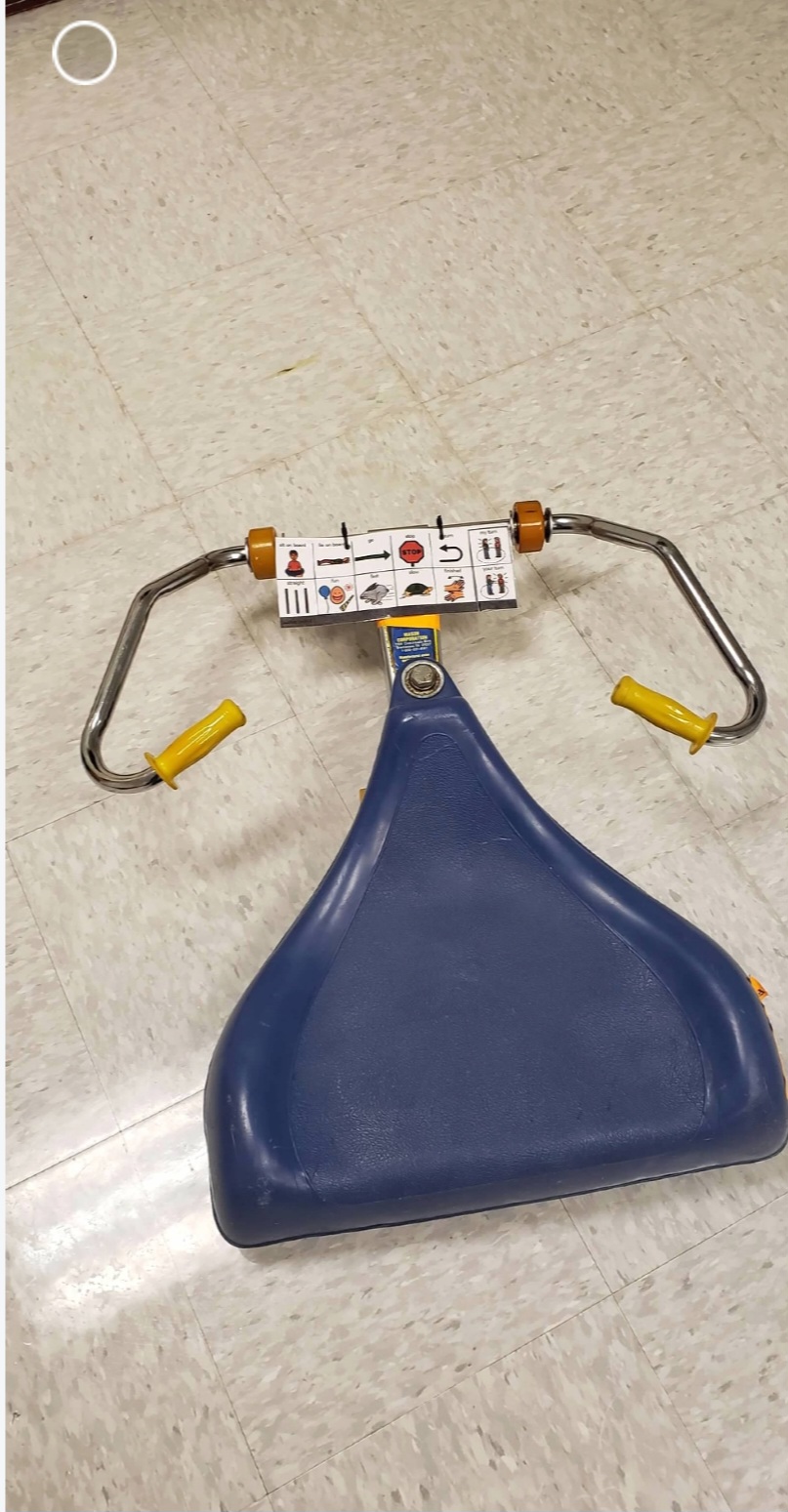
I am often told that I influence people. I have had an influence on all staff members in my building, including administrators and related service providers.
Our music teacher incorporates the core word of the week in her classes every week. She works hard to make it fun and engaging for the students.
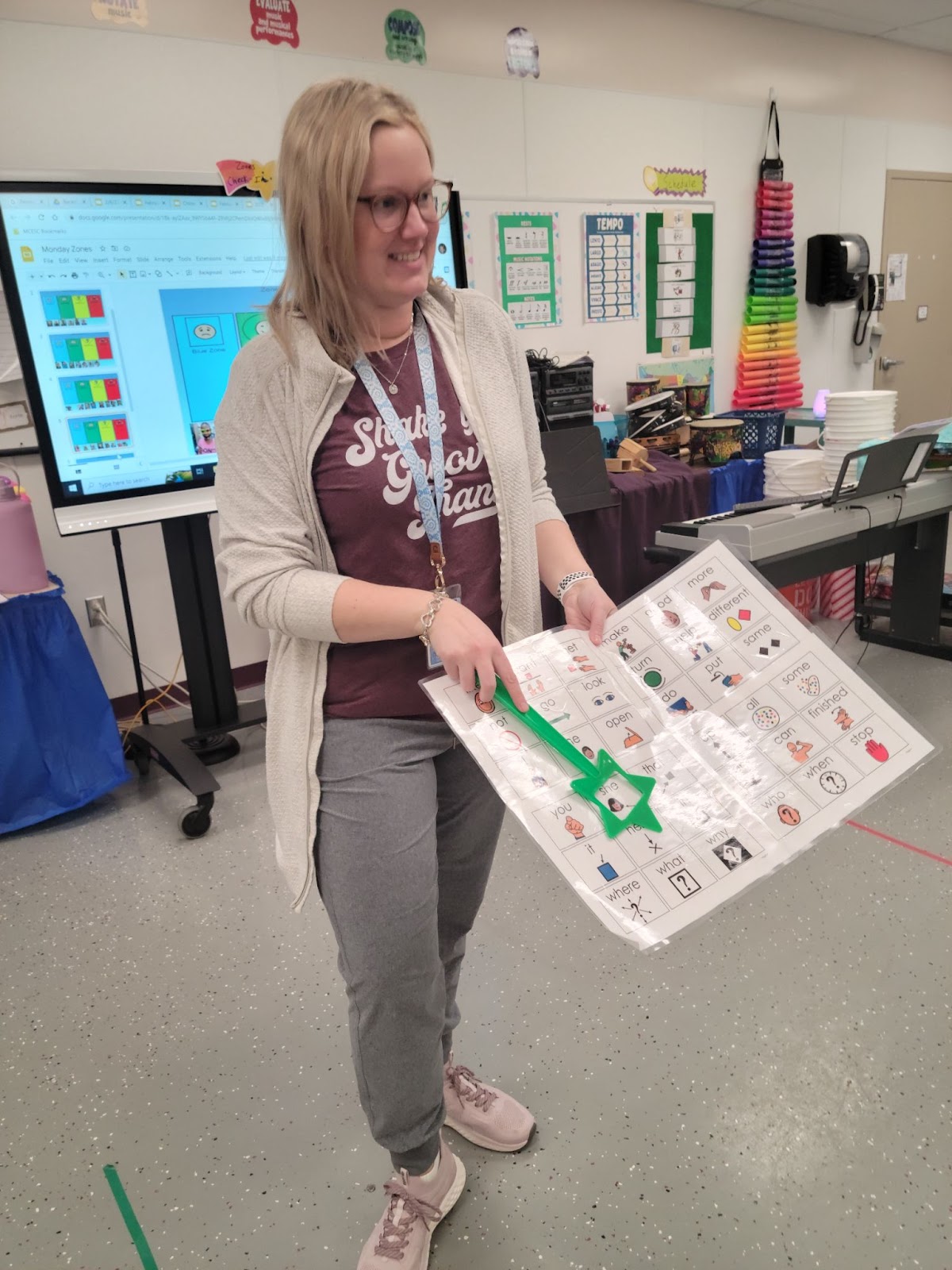
Literacy and AAC
I have influenced teachers and other related service providers by leading a monthly book study on Comprehensive Literacy for All by Dr. Karen Erickson and David Koppenhaver. I have a passion for AAC and Literacy. Teachers have been trying new things in their classrooms to engage students in Literacy and AAC.


I have influenced my colleagues by creating themed lessons to be used throughout the month or by choosing a book to focus on for the month and use repetition with variety.
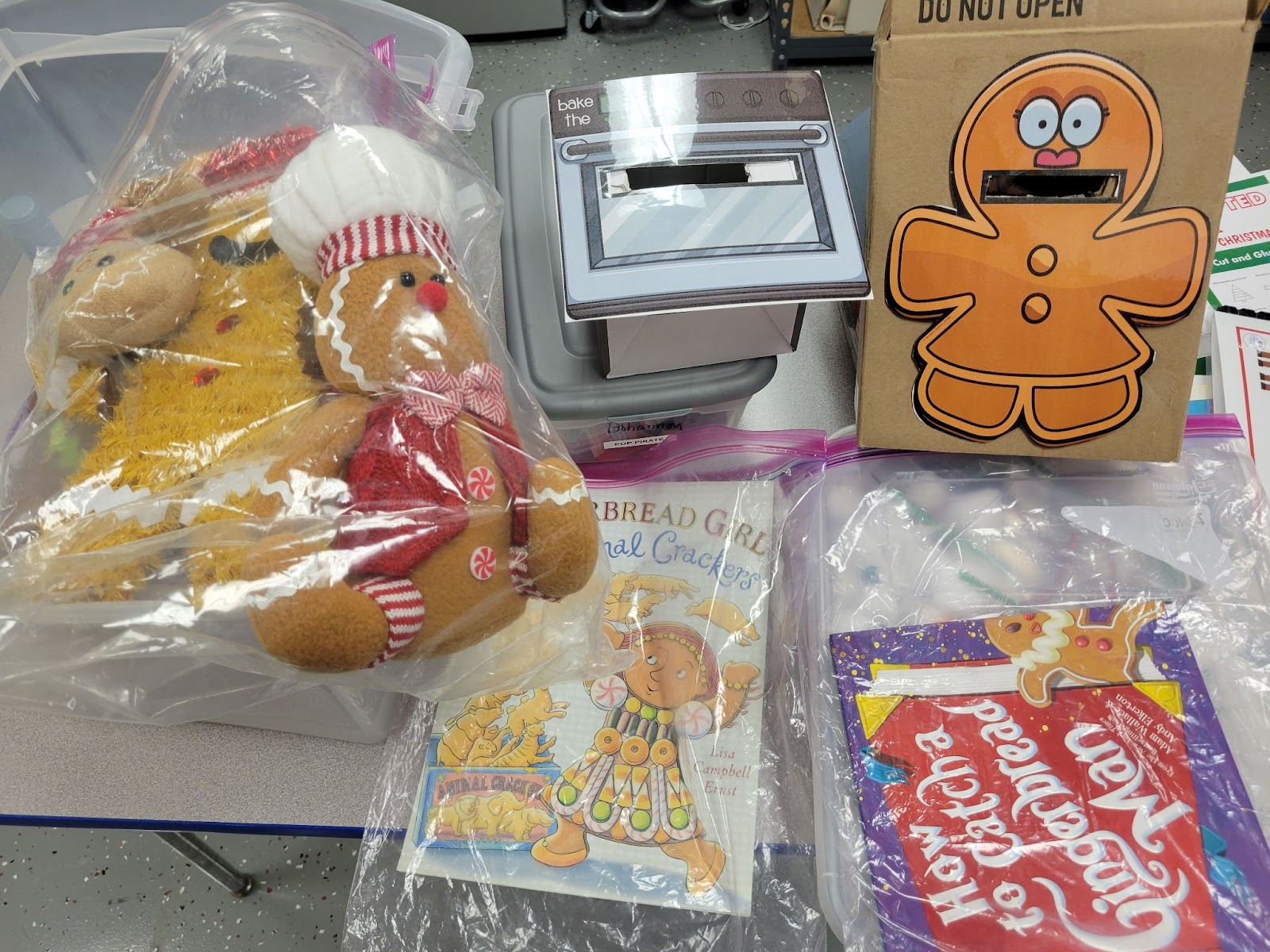
I influence staff through the coaching of AAC in the classroom during a variety of activities. Staff is more motivated to use aided language stimulation with their students and they have seen the benefits
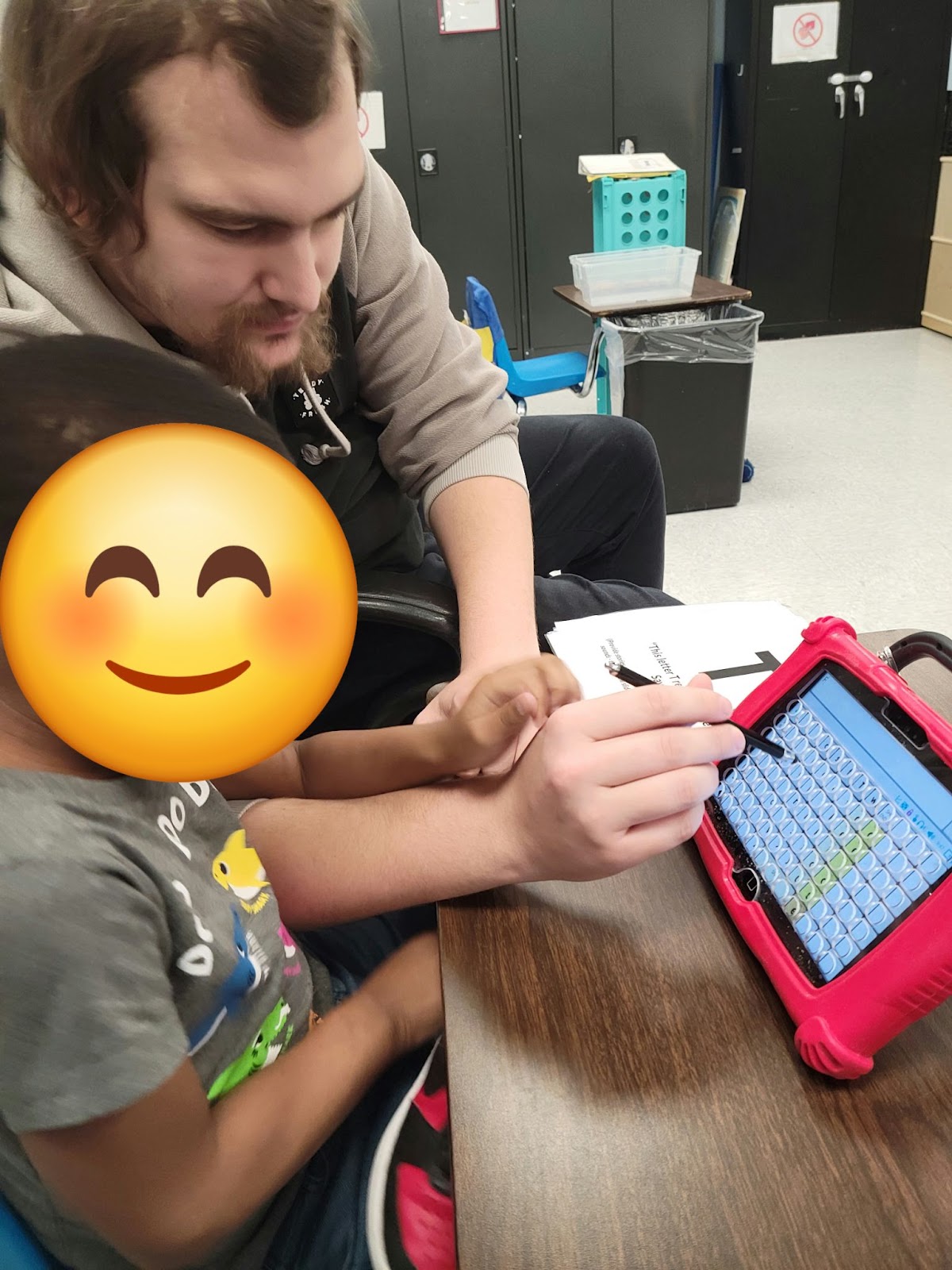
Our mission at MCESC Learning Centers is to serve our students so that they can succeed. As a visionary leader, I aspire to use my enthusiasm, creativity and influence for AAC, communication and literacy to one day serve in a coaching role so that staff and students can be successful.
A huge shoutout to Laura for sharing these fabulous supports! We always love the opportunity to work with you and are so happy that you are part of our A-LIST (and MCESC family)!






































